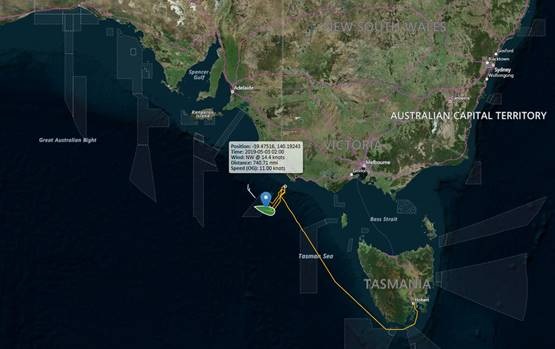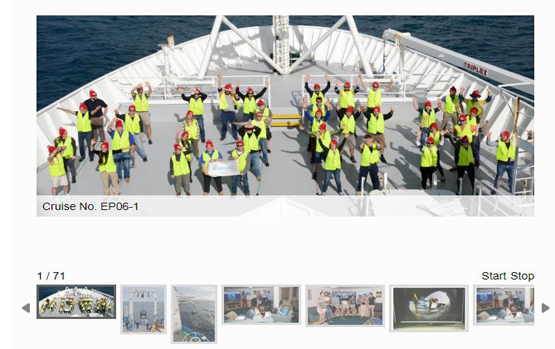An Australian voyage retracing part of the historic first International Indian Ocean Expedition has shed new light on one of the least understood areas of the planet. Forty researchers from 18 institutions have returned from 32 days at sea sampling along the 110°E longitudinal meridian in the deep ocean, approximately 500-600 km offshore of the west coast of Australia.
Voyage Chief Scientist, Professor Lynnath Beckley, said the voyage was "the culmination of a research plan developed over several years and has provided Australia's major contribution to the second International Indian Ocean Expedition." "It has been inspirational to have such a dedicated team of scientists and students from so many institutions all working together towards understanding this south-eastern part of the Indian Ocean," Professor Beckley said.
"The rapport amongst the team has been great with everyone contributing, learning and thinking of ways to maximise our multidisciplinary approach." The researchers measured physical and chemical properties and collecting water samples down to 5,800m depth. They also investigated biota from microbes to megafauna living in these waters. The team also used bio-optics to confirm the accuracy of ocean colour observations by satellites to evaluate production by algae and carbon sequestering on an ocean basin scale.
Professor Raleigh Hood from the University of Maryland Center for Environmental Science and lead author of the IIOE-2 Science Plan was onboard the CSIRO research vessel Investigator for the past month. "The voyage has been an overwhelming success. We have achieved virtually every scientific goal we set out to achieve," Professor Hood said. "I have been studying biological oceanography for more than 30 years, yet I have seen numerous planktonic organisms on this cruise that I have never seen before."
Dr Helen Phillips from the University of Tasmania led the physical oceanography research on the voyage. "In spite of the incredible work of the original IIOE, and work since then, the Indian Ocean is still a frontier," Dr Phillips said.
"This voyage is a wonderful and rare example of a team examining physical, chemical and biological processes simultaneously to learn how the Indian Ocean has changed and how it is responding to the continuing rise of carbon dioxide in our atmosphere." Results from this voyage will be compared to data from the original voyage, to examine if there have been any changes to the marine environment over past 60 years. This research was supported by a grant of sea time on RV Investigator from the CSIRO Marine National Facility.
Be sure to follow our daily Log from One Ten East at https://iioe-2.incois.gov.in and https://wamsi.org.au







